We’ve long admired Thabo Modise’s gallery-hopping experiences offered by his tour company, Toura Travel Therapy. Modise has a wonderful ability to talk about art in a way that’s inviting and illuminating, without the typical “art world speak" that can so easily alienate people. Modise’s Soweto Art Tour, launched in June 2025, deepens his mission. Instead of visiting gallery spaces, we were taken into the heart of where artistic creation happens: artists’ studios and homes in Soweto. Along the way, Modise pointed out murals, statues, and the homes of Soweto icons, weaving a vibrant tapestry.
"This tour is about access, appreciation, and open-ended conversations about the societies we are trying to build." – Thabo Modise aka Thabo the Tourist
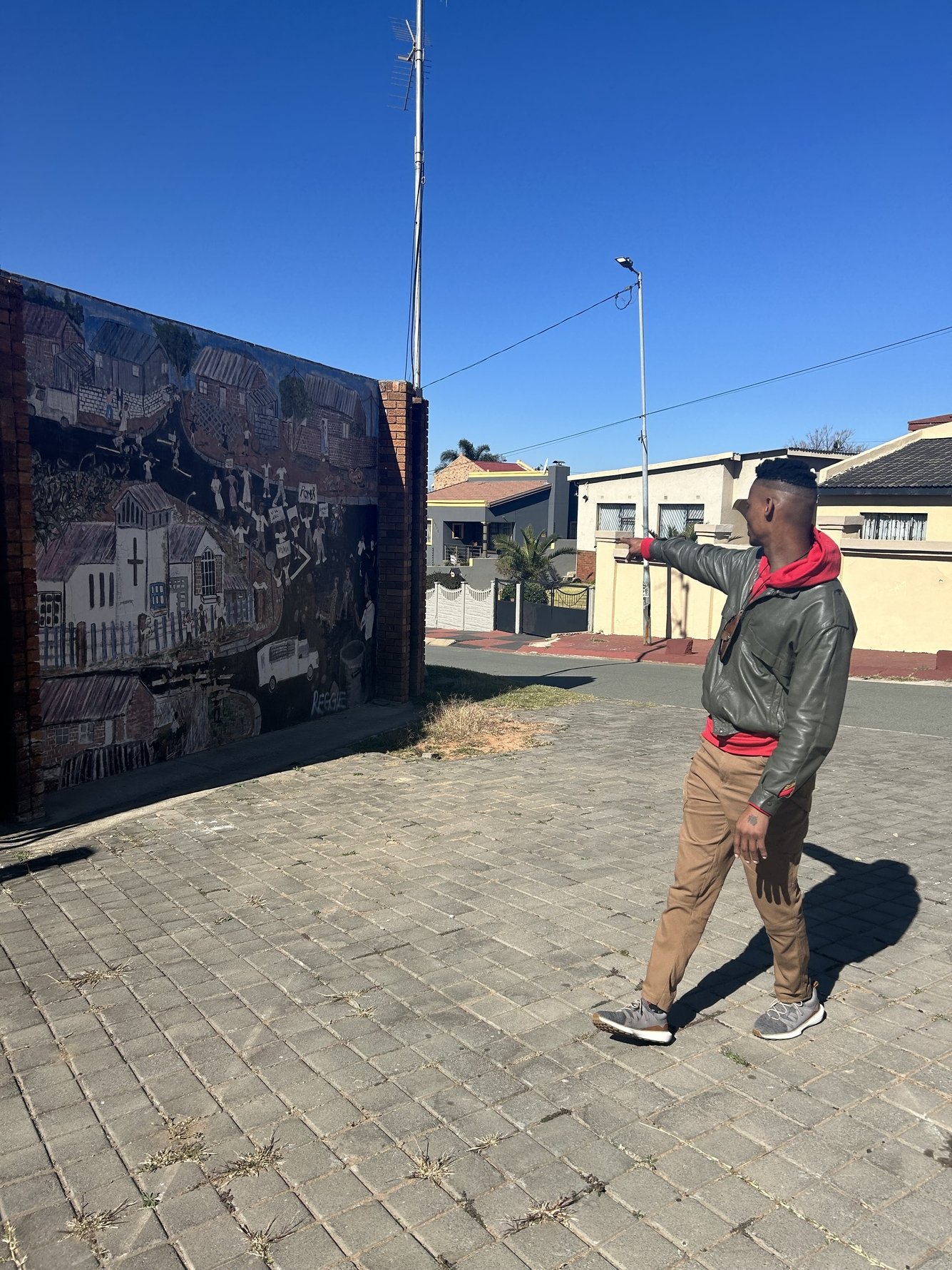
“After curating immersive art tours in Johannesburg North and the inner city, it was imperative to diversify and expand Toura Travel Therapy’s offerings. I couldn’t think of a better place than Soweto – the place I grew up in, and the township that shaped my career and nurtured my love for art and tourism,” says Modise.
First stop: Transformative threads with Lerato Motau
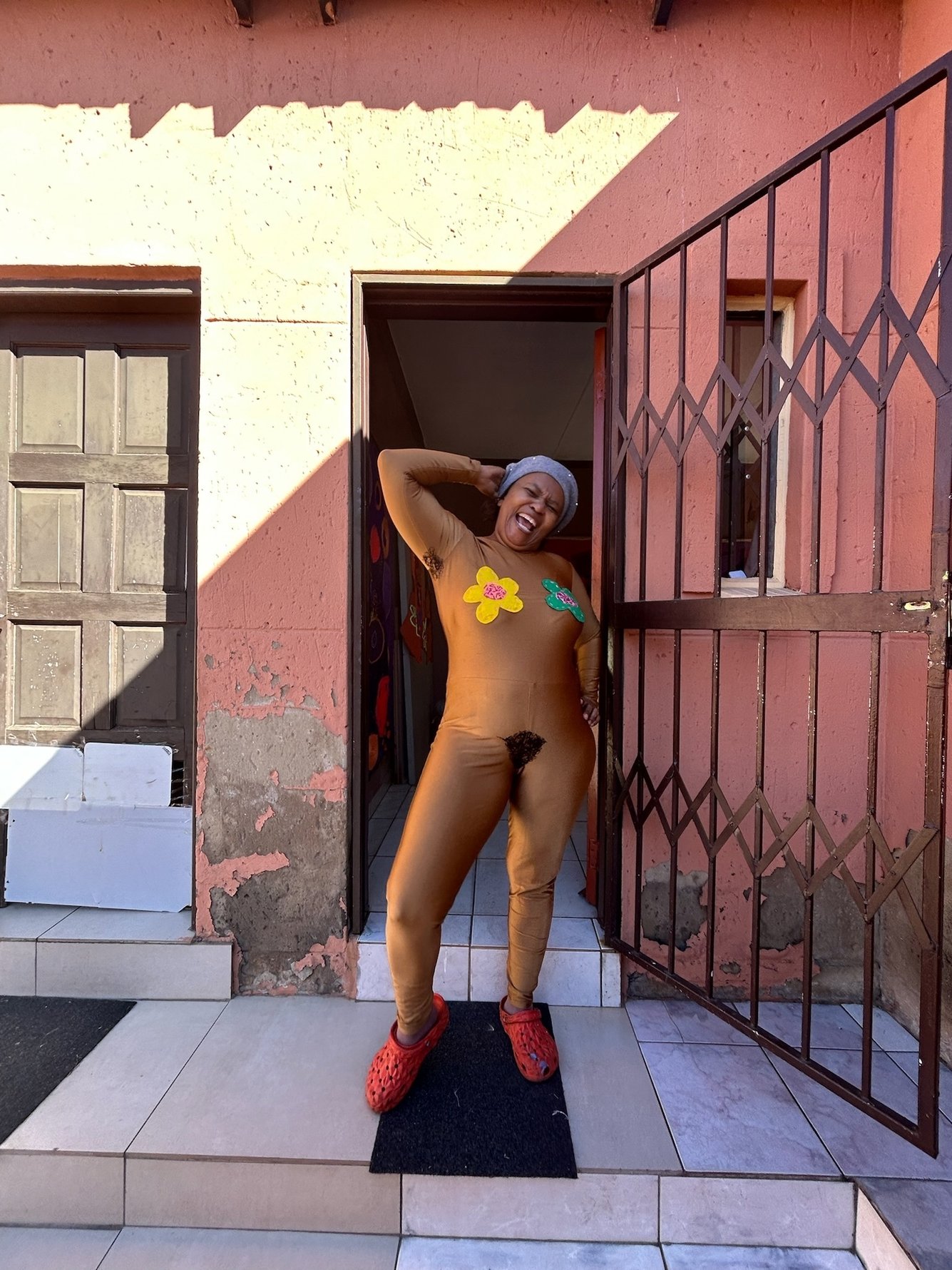
We met Modise at Lebo’s Soweto Backpackers in Orlando West, where a morning bonfire and a warm drink got things going.
From there, we climbed aboard a bus; our cheerful first stop was the studio of the bubbly Lerato Motau, an artist working in fabric and thread while raising funds for children with dyslexia – a condition she and her daughter also share, making this a matter close to her heart. Her studio is tucked behind her home in the suburb of Mzhimhlope: from the outside, nothing in particular tells you that you are about to enter a space exploding in colour and creativity.
Inside, you are in Motau’s world. Her intricate, embroidered works adorn the walls of her studio space – and she changes these regularly so visitors can always expect something new. A central table is stacked with works-in-progress. During our visit, these were portraits of Motau’s male friends and family members – heroes of hers, rendered lovingly – for an upcoming exhibition. An interesting departure for the artist, who typically celebrates women in her work.
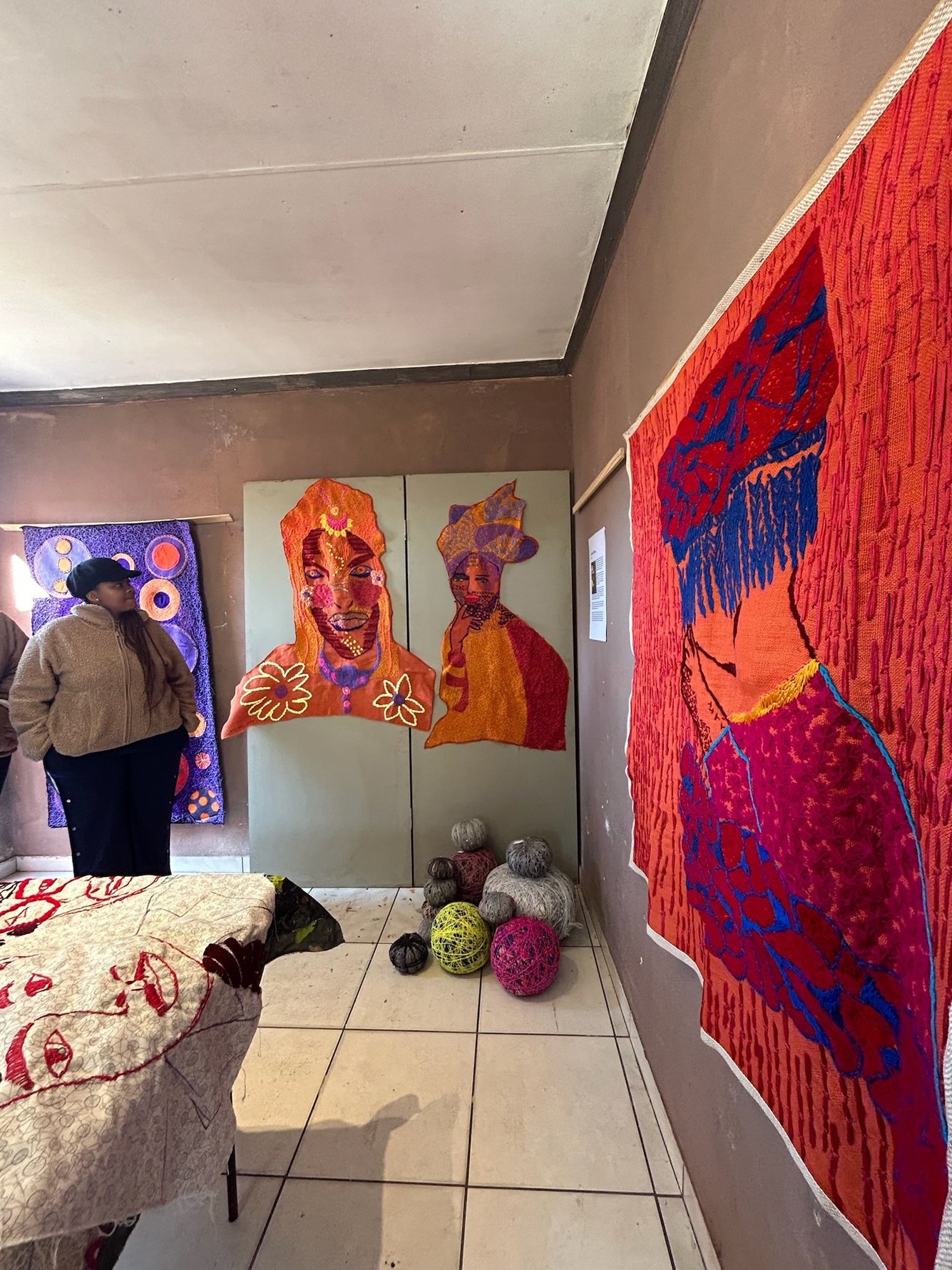
Lest we forget the best part: before she’d uttered more than a few words to the expectant crowd, Motau disappeared for a transformation – returning wearing a one-piece suit she had made herself, with giant floral motifs adorning her chest, the colour of her lycra onesie giving the impression of saucy nakedness. It’s one of those things you have to see to believe, and we were left with the impression that not only is Motau unafraid – she’s a singular figure, and one with a deep sense of humour. It cemented our impression of her as a fascinating practitioner, whose art is not only in the making: it is in the way she lives, too.
Stop two: Street to studio with Senzo Nhlapo
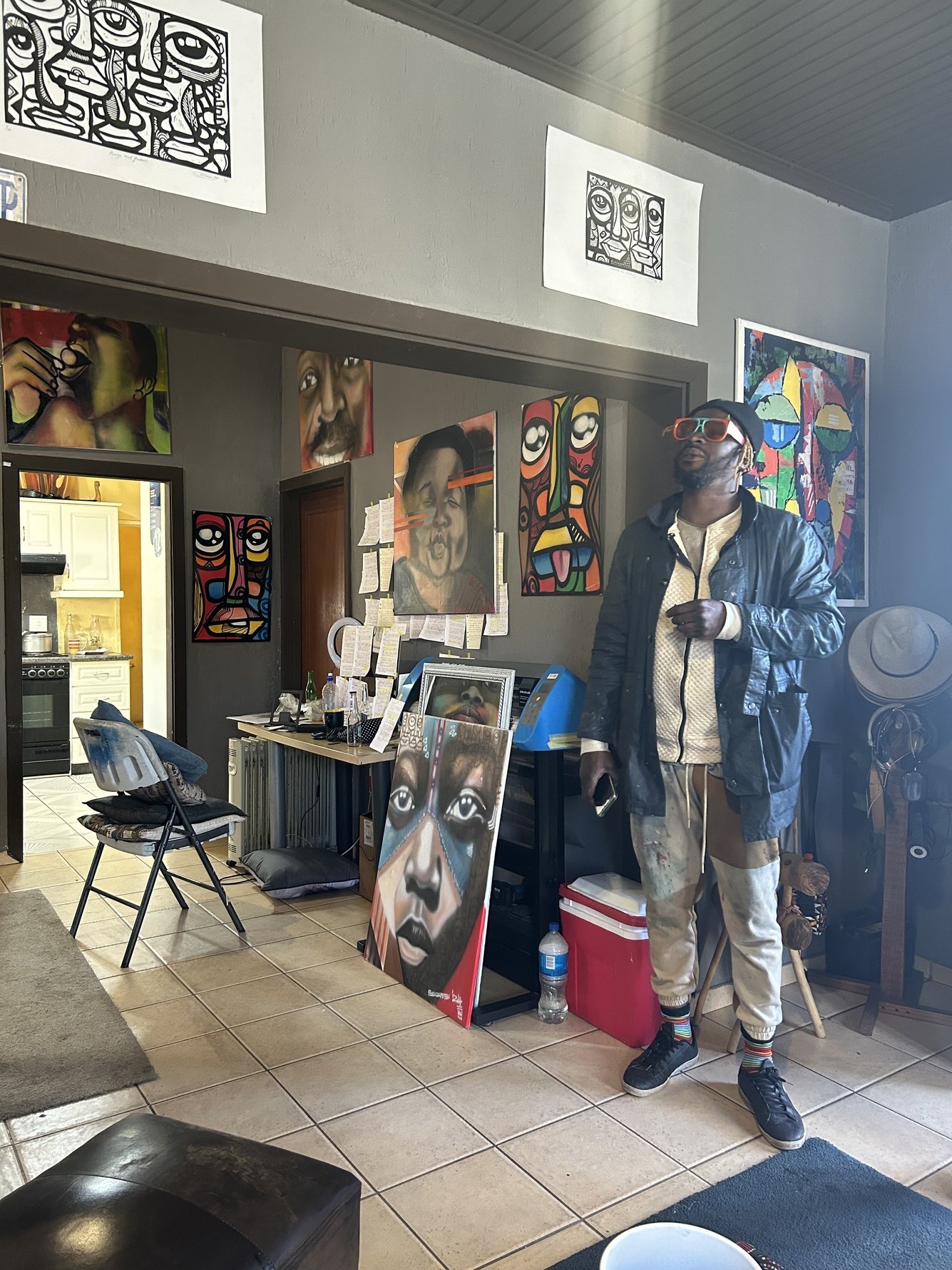
For our next stop, we were welcomed into the home studio of Senzo Nhlapo, whose characteristically colourful, abstract artworks (coined by him as “African pop art”) adorn many walls across Soweto – by this point, we’d already spotted a few of them, and the tally racked up considerably by the time the day was done.
In the driveway of Nhlapo’s home in Orlando West, more of his signature works set the scene, while the back of his car was filled with cans of spray paint, and the walls inside his home were full of art. It was a visual feast. This is the place where one begins to get a sense of Nhlapo as not only a street artist, but as a multi-faceted practitioner. Among his artworks that adorn the walls are black and white prints and paintings in more classical styles that mingle with the vivid pieces rendered in his most immediately recognisable style. Even the fridge had received his artistic treatment.
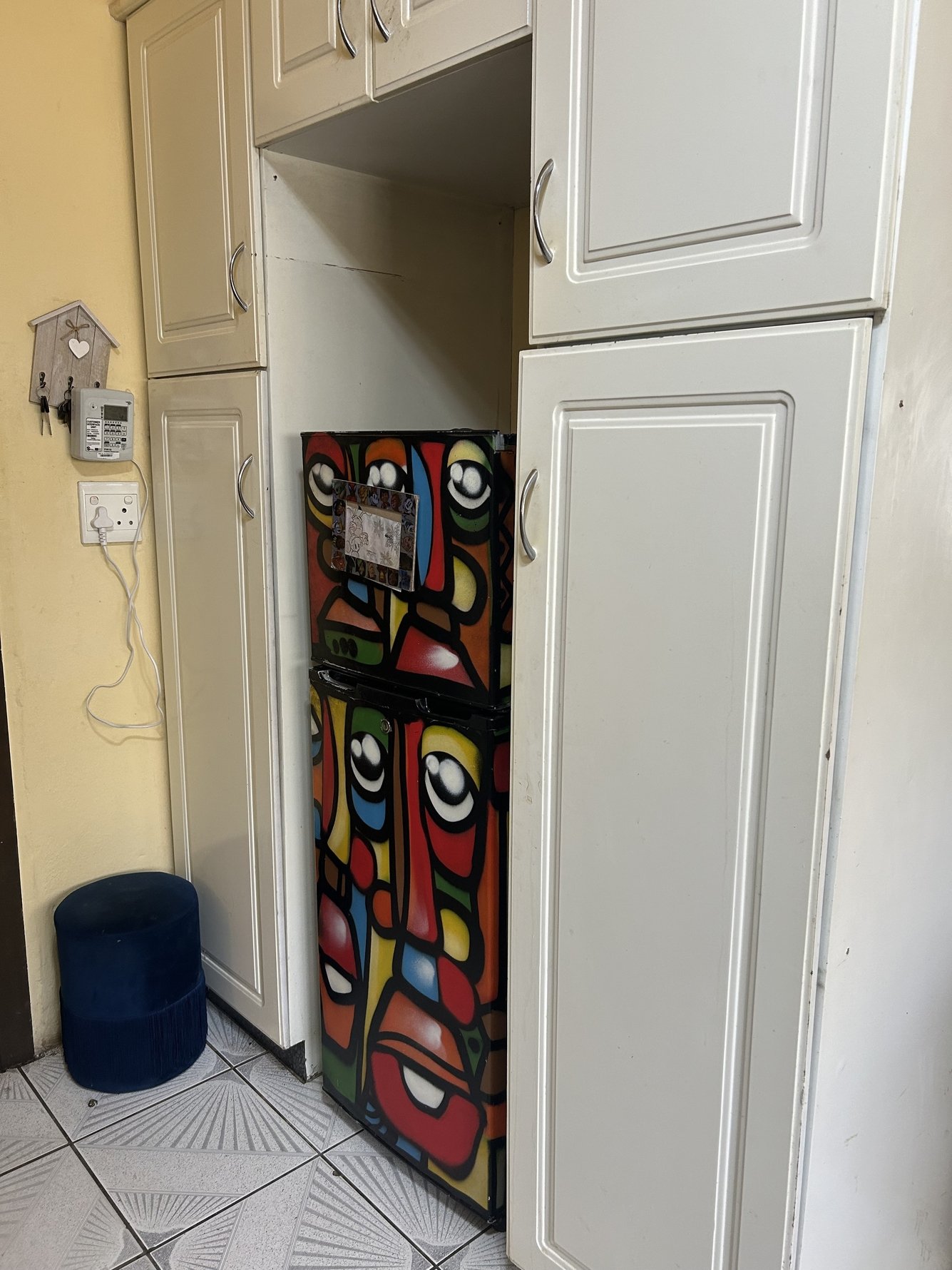
"We want to bridge the gap between artists and collectors, and also to inspire a new generation of art appreciators and modern-day travellers seeking genuine discovery and connection." – Thabo Modise aka Thabo the Tourist
Nhlapo studied fine art at the Funda Arts Centre in Soweto, with further training at Johannesburg’s Artist Proof Studio, the Academy of Art in Germany, and École Supérieure des Beaux-Arts in France. His work draws on everything from African masks to Picasso’s Cubism, revealing a practice that is both globally informed and deeply rooted in township identity.
Stop three: Heritage meets pop at Eyethu Heritage Hall
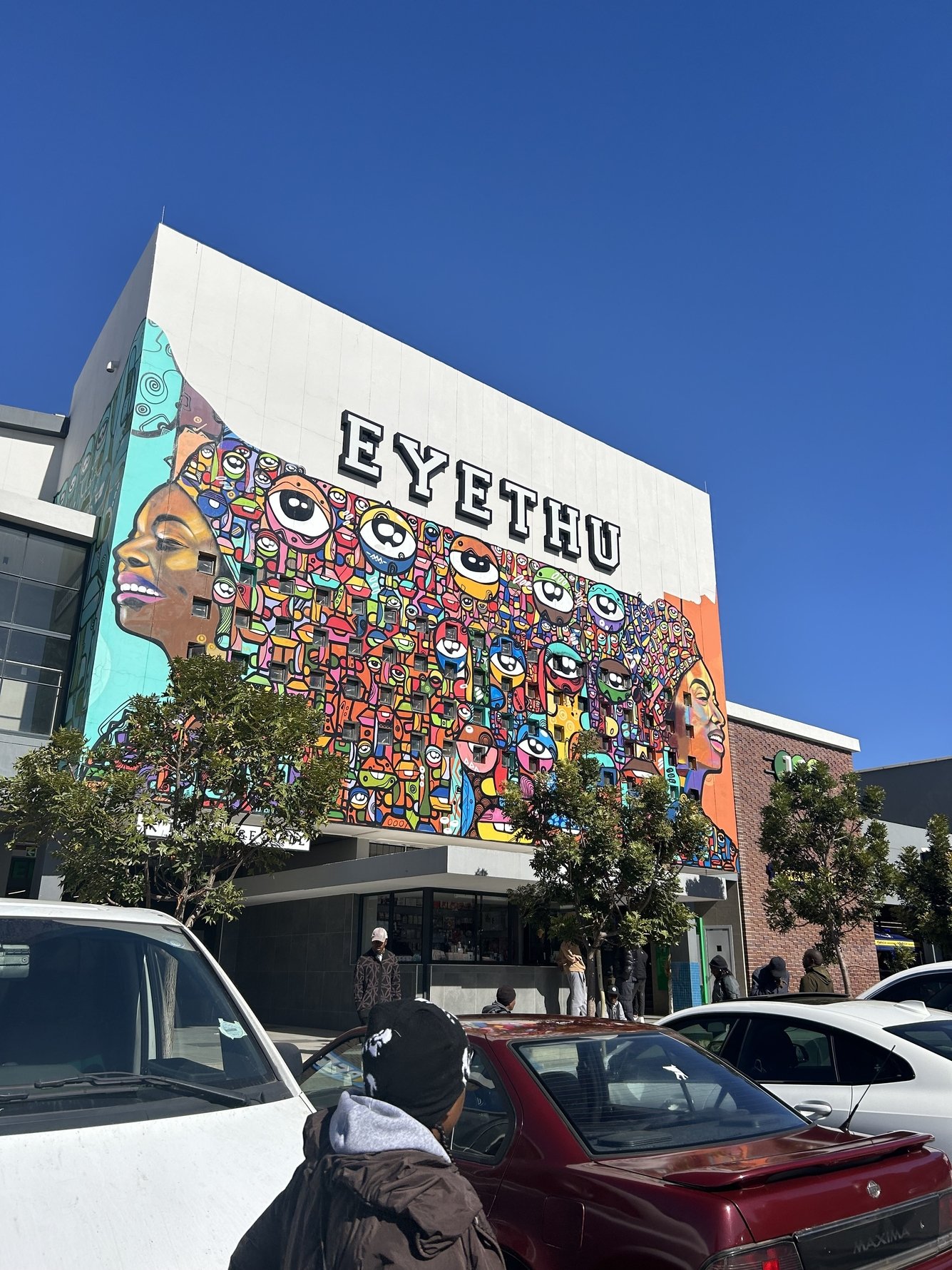
At the Eyethu Heritage Hall, we saw yet more of Nhlapo’s kaleidoscopic murals. They adorn the building’s restored exterior – marking the evolution of this once-abandoned landmark into a vibrant community arts and heritage space. Here, pop art meets museum exhibit to brilliant effect.
Eyethu Heritage Hall is built on the site of the iconic Eyethu Cinema in Mofolo Central, which operated between 1969 and 1994. This landmark community space was founded by husband and wife, Ephraim Batana and Caroline Kinini Tshabalala. Now, the space honours its legacy through multimedia exhibitions, educational programming, and events – all co-curated by the couple’s granddaughter, Lerato Tshabalala Mini, and other members of the family.
Read more: Eyethu Heritage Hall: Where Soweto’s stories star
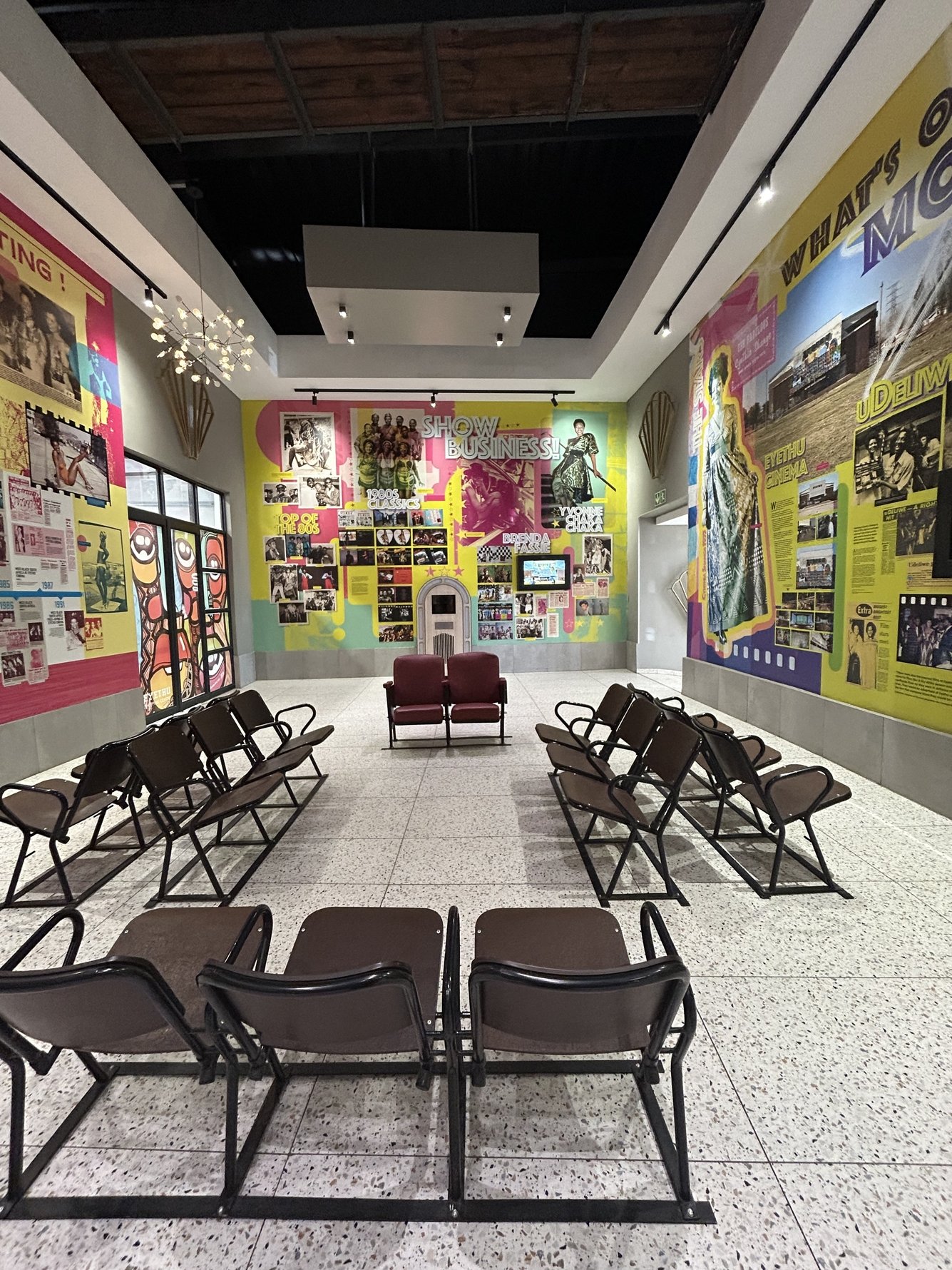
It's unusual to find a museum space like this within a predominantly retail setting. It is also novel in that it positions the Hall in the centre of a heavily foot-trafficked area, making it visible and accessible to passers-by. Eyethu is also the start of what Tshabalala Mini calls the Soweto Art Mile – a growing route that maps Soweto’s cultural legacy and contemporary scene alike.
Final stop: Found objects and fierce vision with Kenny Nkosi
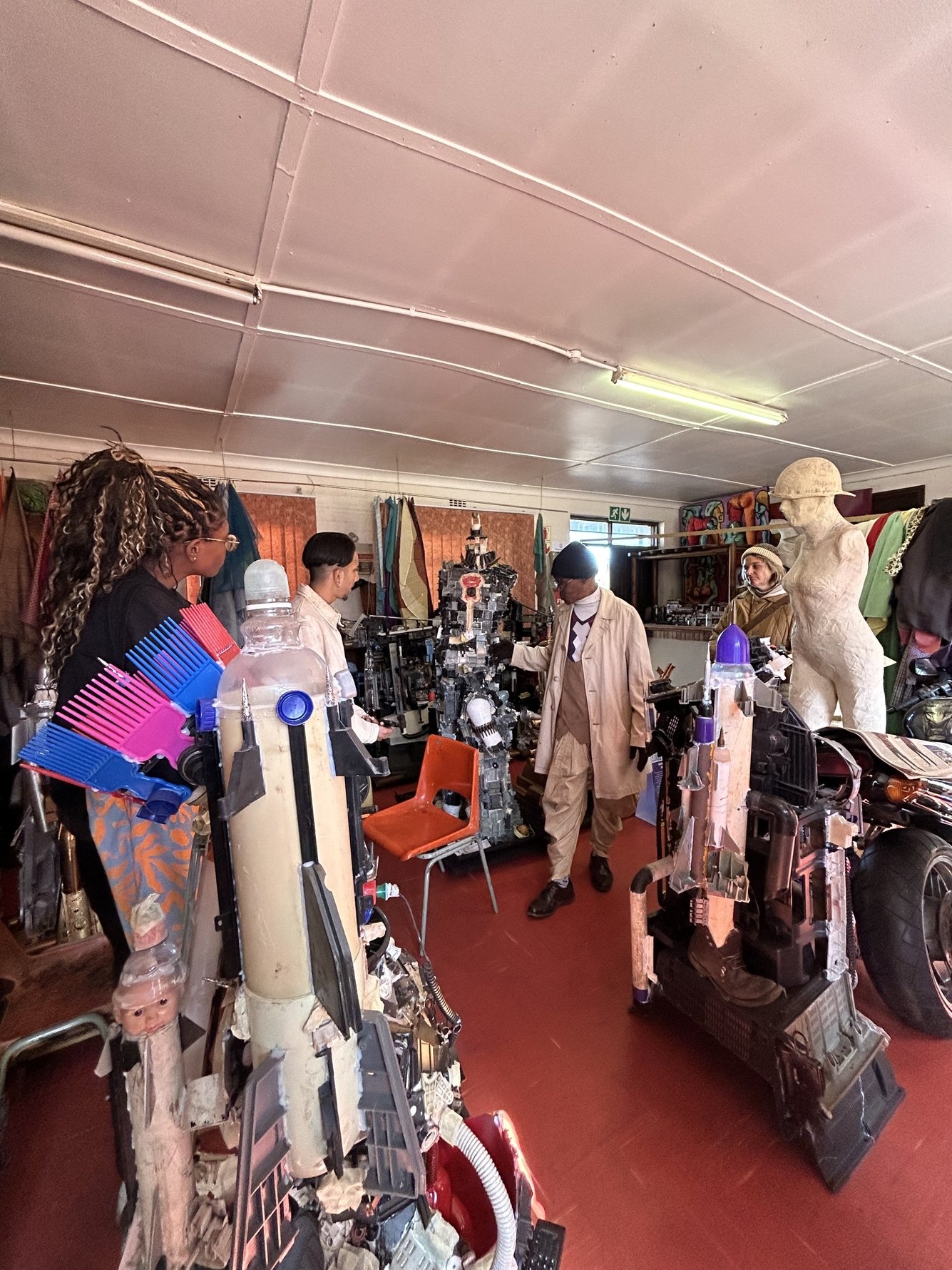
Our final stop was the Mofolo Art Centre in Mofolo Central, to visit the studio of legendary artist Kenny Nkosi. His found-object sculptures (made with trash he collects in the area) were a delight to behold in their various stages of completion. While Nkosi came up alongside the likes of internationally recognised names like Sam Nhlengethwa, whose practice was also based at Mofolo in the 1980s, he is lesser-known by comparison – but no less fascinating.
On our visit, Nkosi made multiple jokes about the means he employs to gather materials for his sculptures, dismissing any concerns by witnesses on how his trash-collecting escapades might reflect on his mental well-being. He isn’t much concerned with the opinions of others, and it was refreshing to spend time with him for exactly this reason. An utterly dignified figure, his outfit on the day was impeccably put together – quirky, but dapper. The main hint of a rebellious nature in his dress was the cheeky poo emoji socks peeking out from under his trousers, which you might easily miss.
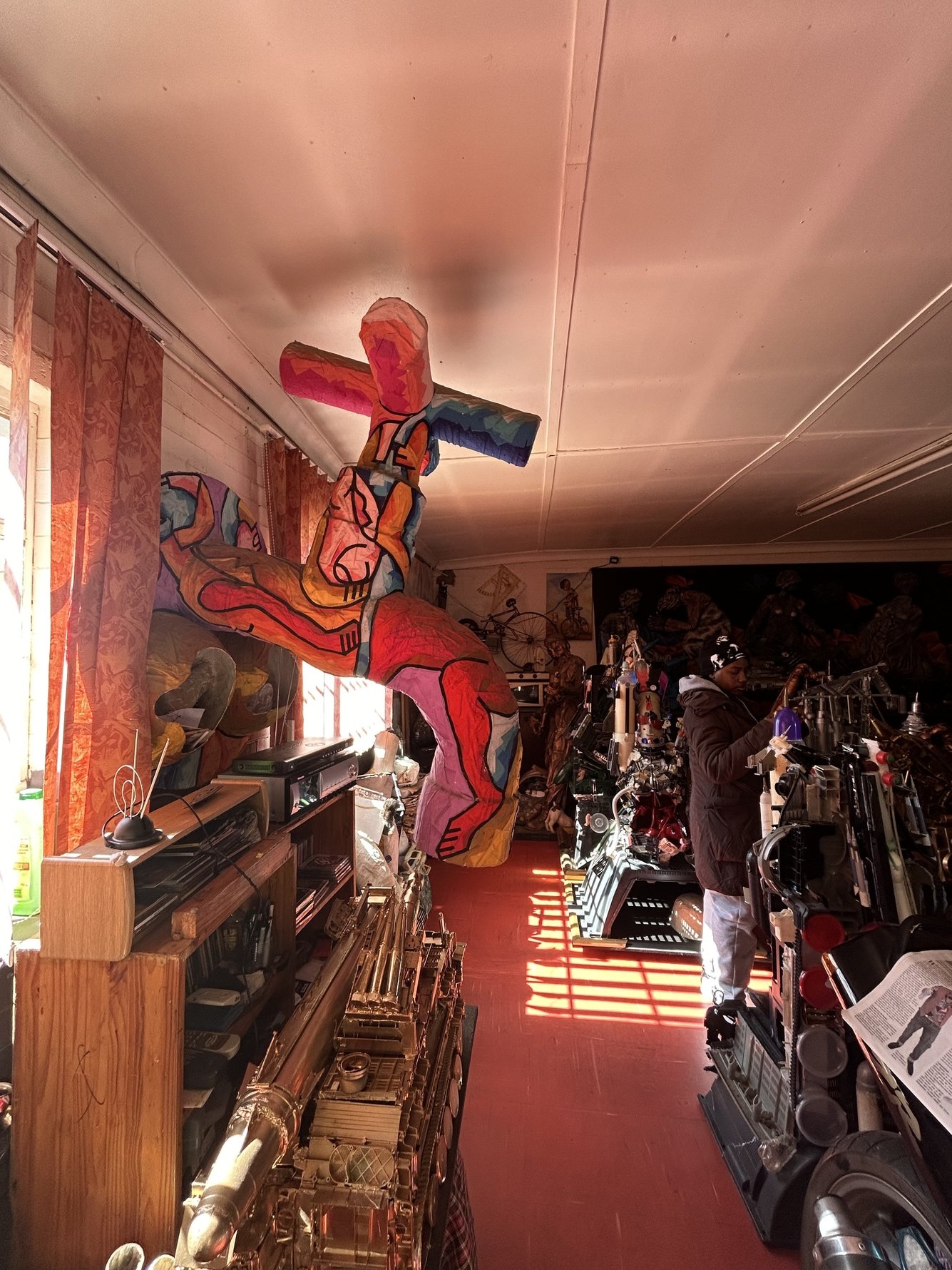
"The route connected seamlessly because I had already established long-standing relationships with all participating artists. I am an avid collector and big fan of their work and ethics." – Thabo Modise, aka Thabo the Tourist
His studio space was a riot, and we had to weave through many curiosities as to make our way around it. On one wall, there was a giant papier-mache faucet. It’s amazing to see these sculptures up close before they have been spray-painted: in their raw form, they are a cacophony of different colours, textures, and materials all vying for your attention. Anything goes in these punk-ish compositions: old TVs, children’s toys, and bits of plumbing all form part of Nkosi’s arsenal.
Once painted over, these works take on a decidedly more harmonious feel – the metallic paint creates the illusion of a single, unified object. It also allows new forms to reveal themselves. To us, some of Nkosi’s sculptures, though abstract, call the shapes of musical instruments to mind. To complete one such piece takes the artist a month.
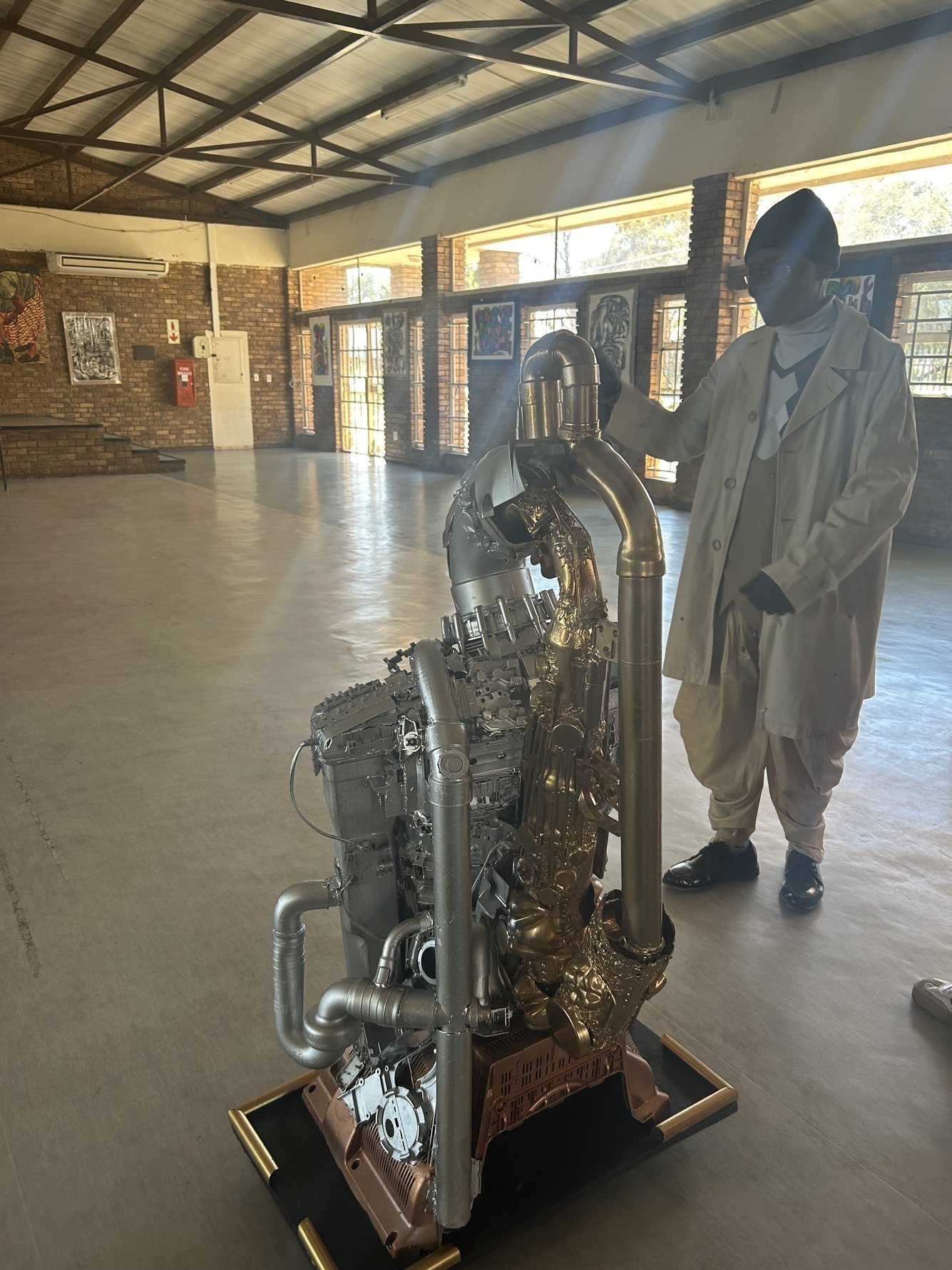
Why now? Modise’s vision for the future
Reflecting on why it made sense to launch his new tour at this time, Modise told us: “I certainly believe that Soweto is the city within a city – a trendsetter city. Most of the artists who exhibit works in established galleries in the north are from this township, and yet our community has to travel exorbitant distances to access their work. This tour is about access, appreciation, and open-ended conversations about the societies we are trying to build.”The three local practitioners we visited couldn't be more different, wonderfully exhibiting diversity of creative expression in Soweto. “To be quite candid,” Modise reflected, “the route connected seamlessly because I had already established long-standing relationships with all participating artists, and I truly am an avid collector and big fan of their work and ethics. To collaborate with them on this project is a dream come true.”
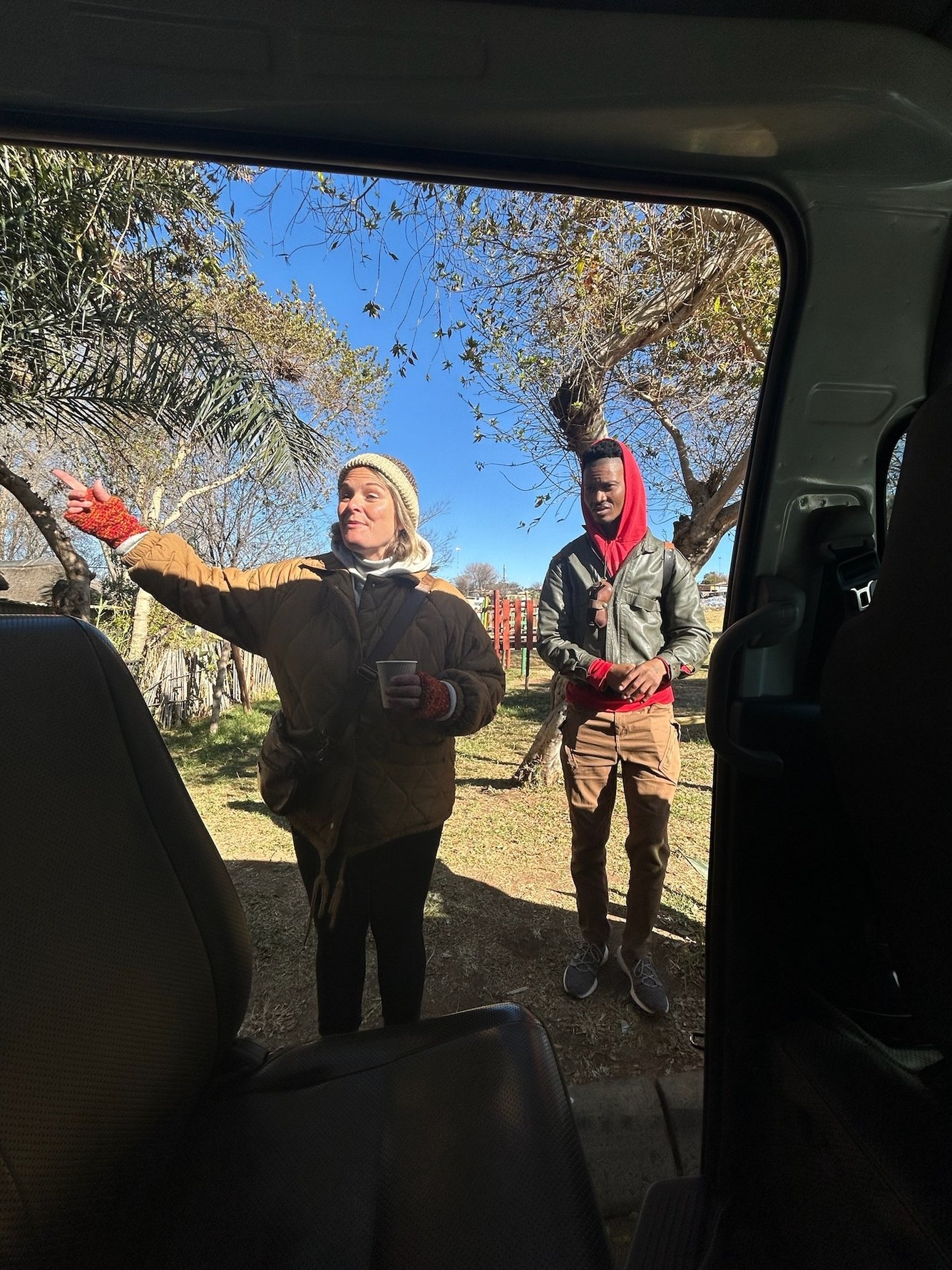
Supporting Soweto artists is close to Modise’s heart, with the tour's proceeds going directly to the artists. “Empowering artists has always been at the centre of the work we do at Toura Travel Therapy,” Modise says. “As a creative myself, I’ve experienced how challenging it can be to have market access or representation from established galleries in South Africa. We want to bridge the gap between artists and collectors, and also to inspire a new generation of art appreciators, collectors, and modern-day travellers seeking genuine discovery and connection. I believe the table is big enough for all of us. These proceeds are meant to affirm the artists for the work they do, and further solidify and continue to build a self-sustaining creative industry.”
What does Modise hope people will take away from this tour? “A refined perspective of Soweto. A deeper appreciation for the township that is considered the birthplace of our liberation. And, that they will begin to lend themselves to the conversations initiated by Soweto’s artists through their work.”
Read more: How to spend a weekend in Soweto


_m.jpg)
_m.jpg)
_m.jpg)


Comments